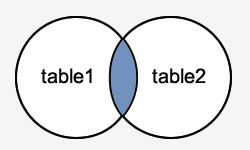This article describes how to repair MySQL databases and tables. As a database's tables grow, errors may occur from time to time. When they do, MySQL includes several tools that you can use to check and repair database tables. To do this, follow the procedures below in the order in which they appear.
This article only applies to products listed in the Article Details sidebar. You must have root access to the server to follow these procedures.
STEP 1: BACKING UP THE DATABASES
Before you attempt to repair any database, you should back it up first. To back up all of the files from all of your databases, follow these steps:
- Log in to your server using SSH.
- Stop the MySQL server using the appropriate command for your Linux distribution:
- For CentOS and Fedora, type:
service mysqld stop
- For Debian and Ubuntu, type:
service mysql stop
- For CentOS and Fedora, type:
- Type the following command:
cp -rfv /var/lib/mysql /var/lib/mysql$(date +%s)
This command copies all of the files from all of your databases to a directory name based on the current time (more precisely, the number of seconds elapsed since January 1, 1970). This ensures that each database backup is stored in a directory that has a unique name. For added protection, you can (and should) back up the database files to a remote location not on the server. - Restart the MySQL server using the appropriate command for your Linux distribution:
- For CentOS and Fedora, type:
service mysqld start
- For Debian and Ubuntu, type:
service mysql start
- For CentOS and Fedora, type:
STEP 2: CHECKING AND REPAIRING A TABLE WITH MYSQLCHECK
After you back up your databases, you are ready to start troubleshooting. The mysqlcheckprogram enables you to check and repair databases while MySQL is running. This feature is useful when you want to work on a database without stopping the entire MySQL service.
Additionally, mysqlcheck works on tables that use the MyISAM or InnoDB database engines.
For information about how to determine which storage engine a database table is using, please see this article.
To use mysqlcheck, follow these steps:
- As the root user, type the following command:
cd /var/lib/mysql
- Type the following command, replacing DATABASE with the name of the database that you want to check:
mysqlcheck DATABASEThe previous command checks all of the tables in the specified database. Alternatively, to check a specific table in a database, type the following command. Replace DATABASE with the name of the database, and replace TABLE with the name of the table that you want to check:mysqlcheck DATABASE TABLE
- Mysqlcheck checks the specified database and tables. If a table passes the check, mysqlcheck displays OK for the table. However, if mysqlcheck reports an error for a table, type the following command to try to repair it. Replace DATABASE with the database name, and TABLE with the table name:
mysqlcheck -r DATABASE TABLE
- If mysqlcheck cannot successfully repair the table or tables, go to the following procedure.
STEP 3: RUNNING ENGINE-SPECIFIC DIAGNOSTICS
If running mysqlcheck does not fix the problem, the next step is to run diagnostics specific to the engine used by the database table or tables. Follow the appropriate procedure below for your table's database storage engine.
For information about how to determine which storage engine your database tables are using, please see this article.
Repairing MyISAM tables with myisamchk
If you are using the MyISAM storage engine for a table, you can run the myisamchkprogram to repair it. To do this, follow these steps:
The myisamchk program only works for tables that use the MyISAM storage engine. It does not work for the InnoDB engine.
- Stop the MySQL server using the appropriate command for your Linux distribution:
- For CentOS and Fedora, type:
service mysqld stop
- For Debian and Ubuntu, type:
service mysql stop
- For CentOS and Fedora, type:
- Type the following command:
cd /var/lib/mysql
- Change to the directory where the database is located. For example, if the database is named customers, type cd customers.
- Type the following command, replacing TABLE with the name of the table that you want to check:
myisamchk TABLETo check all of the tables in a database, type the following command:myisamchk *.MYI
If the previous command does not work, you can try deleting temporary files that may be preventing myisamchk from running correctly. To do this, change back to the /var/lib/mysql directory, and then type the following command:ls */*.TMD
If there are any .TMD files listed, type the following command to delete them:rm */*.TMD
Then try to run myisamchk again. - To try to repair a table, type the following command, replacing TABLE with the name of the table that you want to repair:
myisamchk --recover TABLE - Restart the MySQL server using the appropriate command for your Linux distribution:
- For CentOS and Fedora, type:
service mysqld start
- For Debian and Ubuntu, type:
service mysql start
- For CentOS and Fedora, type:
- Test the repaired table or tables.
Running the InnoDB recovery process
If you are using the InnoDB storage engine for a database table, you can run the InnoDB recovery process. To do this, follow these steps:
- Use your preferred text editor to open the my.cnf file on your server. The location of the my.cnf file depends on your Linux distribution:
- On CentOS and Fedora, the my.cnf file is located in the /etc directory.
- On Debian and Ubuntu, the my.cnf file is located in the /etc/mysql directory.
- In the my.cnf file, locate the [mysqld] section.
- Add the following line to the [mysqld] section:
innodb_force_recovery=4
- Save the changes to the my.cnf file, and then restart the MySQL server using the appropriate command for your Linux distribution:
- For CentOS and Fedora, type:
service mysqld restart
- For Debian and Ubuntu, type:
service mysql restart
- For CentOS and Fedora, type:
- Type the following command to export all of the databases to the databases.sql file:
mysqldump --all-databases --add-drop-database --add-drop-table > databases.sql
- Start the mysql program, and then try to drop the affected database or databases using the DROP DATABASE command.If MySQL is unable to drop a database, you can delete it manually in step 8 below after you stop the MySQL server.
- Stop the MySQL server using the appropriate command for your Linux distribution:
- For CentOS and Fedora, type:
service mysqld stop
- For Debian and Ubuntu, type:
service mysql stop
- For CentOS and Fedora, type:
- If you were unable to drop a database in step 6, type the following commands to delete it manually. Replace DBNAME with the name of the database that you want to delete:
cd /var/lib/mysql rm -rf DBNAMEMake sure you do not delete the mysql or performance_schemadirectories! - Use your preferred text editor to open the my.cnf file on your server, and then comment out the following line in the [mysqld] section as shown:
#innodb_force_recovery=4
This disables InnoDB recovery mode. - Save the changes to the my.cnf file, and then start the MySQL server using the appropriate command for your Linux distribution:
- For CentOS and Fedora, type:
service mysqld start
- For Debian and Ubuntu, type:
service mysql start
- For CentOS and Fedora, type:
- Type the following command to restore the databases from the backup file you created in step 5:
mysql < databases.sql
- Test the restored database.
MORE INFORMATION
- For more information about mysqlcheck, please visit https://dev.mysql.com/doc/refman/5.5/en/mysqlcheck.html.
- For more information about myisamchk, please visit https://dev.mysql.com/doc/refman/5.5/en/myisamchk.html.


